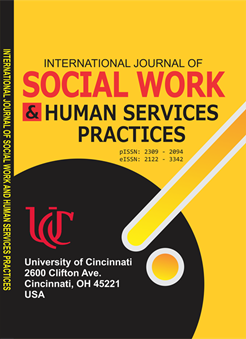INTERNATIONAL JOURNAL OF SOCIAL WORK AND HUMAN SERVICES PRACTICES (IJSWHSP)
IMPACT OF CLASS SIZE ON ACADEMIC OUTCOMES: A SOCIAL WORKER PERSPECTIVE ON PRIMARY SCHOOL EDUCATION IN NIGERIA
E-ISSN: 2122-3342
P-ISSN: 2309-2094
DOI: https://iigdpublishers.com/article/633
Class size is the population of a class and is considered an important determinant of academic performance over which teachers in schools have little or no control. Teachers are frequently able to better manage their classrooms and provide individualized attention to each student when class sizes are smaller. The main objective of the study is to measure the impact of class size on academic outcomes on teacher-student interaction, classroom environment, and social work interventions. The study adopted a qualitative research design, and in-depth interviews were conducted with 16 participants – 8 teachers, 6 students, and 2 social workers. The data was thematically analyzed. The findings revealed that (small) class size impacts individualized teaching and leads to improved teacher-student relationships. Also, the study discovered that the class size impacts the physical class arrangement, and enhances supervision and monitoring of students by the teacher in small classes. Social work interventions include workshops, mentoring programs, teacher support, and counseling for managing class sizes and enhancing the academic outcomes of students. In view of these academic outcomes, the study recommends the provision of an adequate number of classrooms with learning facilities and sufficient teachers following global best practices in terms of pupil-teacher class size ratio.
Azorondu A. Abigail PhD, Oguntona O. Jemimah, Sam-Okere Justina PhD, Ashaolu A. Kehind, Osunsami A. Oluuwafunmilayo, Alade Y. Theresa & Ntiwunka D. Enyioma
Adimonyemma, N., et al. (2018). Impact of class size on students‟ academic performance in biology in Idemili North Local Government Area of Anambra State. International J ournal of Education and Evaluation, 8, 1–10.
Ajayi, O., et al. (2017). Influence of class size on students‟ classroom discipline, engagement, and communication: A case study of senior secondary schools in Ekiti State, Nigeria. Sky Journal of Education Research, 5(5), 60–67.
Akinyemi, I. A., Gbesoevi, E. S., & Afolabi, S. A. (2024). Exploring classroom environment as a predominant factor affecting students‟ academic performance in Lagos State Junior Secondary Schools, Nigeria. Deleted Journal, 2(1), 25–36.
Blatchford, P., Bassett, P., & Brown, P. (2011). Examining the effect of class size on classroom engagement and teacher–pupil interaction: Differences in relation to pupil prior attainment and primary vs. secondary schools. Learning and Instruction, 21(6), 715–730. https://doi.org/10.1016/j.learninstruc.2011.04.001
Martins, F., Peter, B., & Isaiah, A. A. (2007). Class factors as determinants of secondary school students‟ academic performance in Oyo State, Nigeria. Journal of Social Sciences, 14(3), 243–247.
